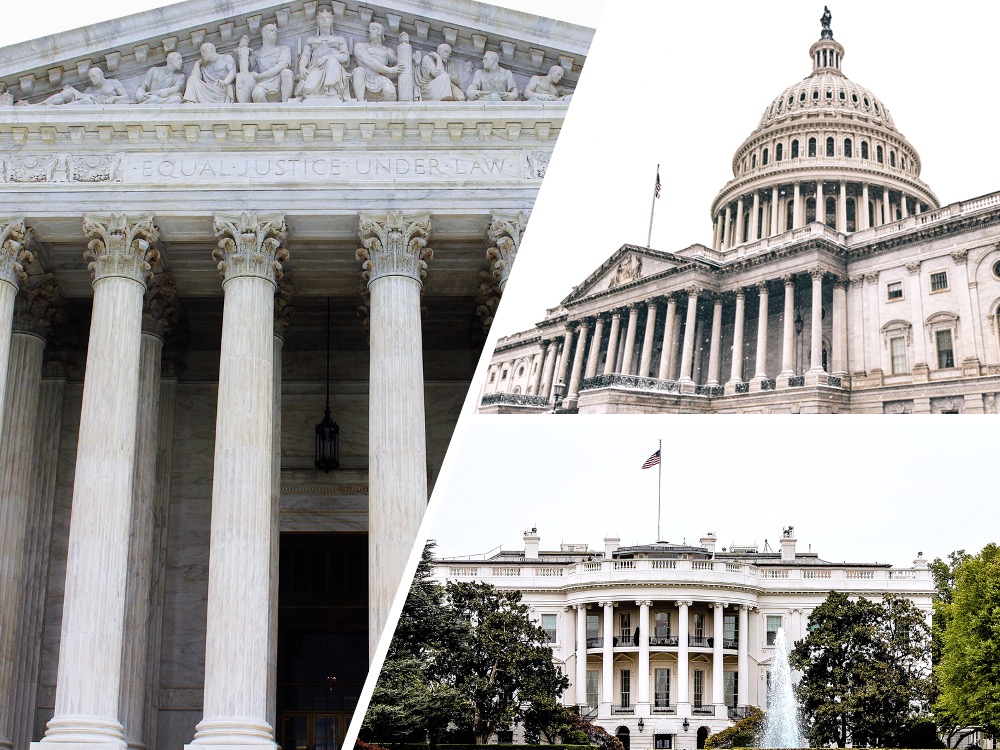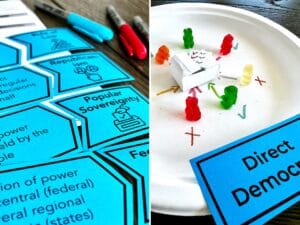No matter how you structure your Civics class, you’re doing a Three Branches of Government unit. There’s no way around it. And it’s for sure your biggest unit, with endless notes about abstract stuff: enumerated powers, how a bill becomes a law, the network of federal courts, etc. There is just so much information to cover.
After years of trying to cram too much content into too little time, I was tired of being too “lecture-y” and feeling like we were getting lost in the weeds rather than able to chew on big questions that excited my students. So I decided to take the “less is more” approach, cut out the minutia, and focus only activities that invite students into the conversation and were relevant to them.
To do that I ventured into the “flipped classroom” set-up so that I wasn’t using up so much precious class time lecturing. And I decided to outsource the lecturing to New Hampshire Public Radio’s amazing podcast called Civics 101. Their episodes are short (10 to 15 minutes) and cover the basics, along with some interesting trivia and a big picture takeaway. They have hundreds of episodes, including tons on the legislative, executive, and judicial branches.
All I had to do was create guided note-taking forms for my students use as they listen. So much simpler than a giant slide deck! And because they already have a general grasp of what Congress, the President, and the Supreme Court are, this set-up of making the lecture the homework worked well for this unit.
Next, I prioritized a short list of must-teach topics for each branch based on their most central powers and what’s most relevant to everyday Americans’ lives, like theirs! I used that list to build activities I knew would inherently be more interesting to high schoolers.
This meant activities that focus on current, real-world issues and chewy questions with no right answers. If you didn’t know, using an inquiry framework is my jam—you may want to check out this blog on 5 steps to building inquiry-centered lessons for a great starter how-to guide.
With the podcast already introducing the “what” to your students, all you need is a quick recap at the start of class and then you can jump right into the “why” and “how,” which is exactly what these five activity ideas listed below do.
Over the years, my Three Branches unit has gone from being one I dreaded to one I enjoy along with the rest. I hope these ideas will help do the same for you!
1. Teach the Fourth Branch of Government
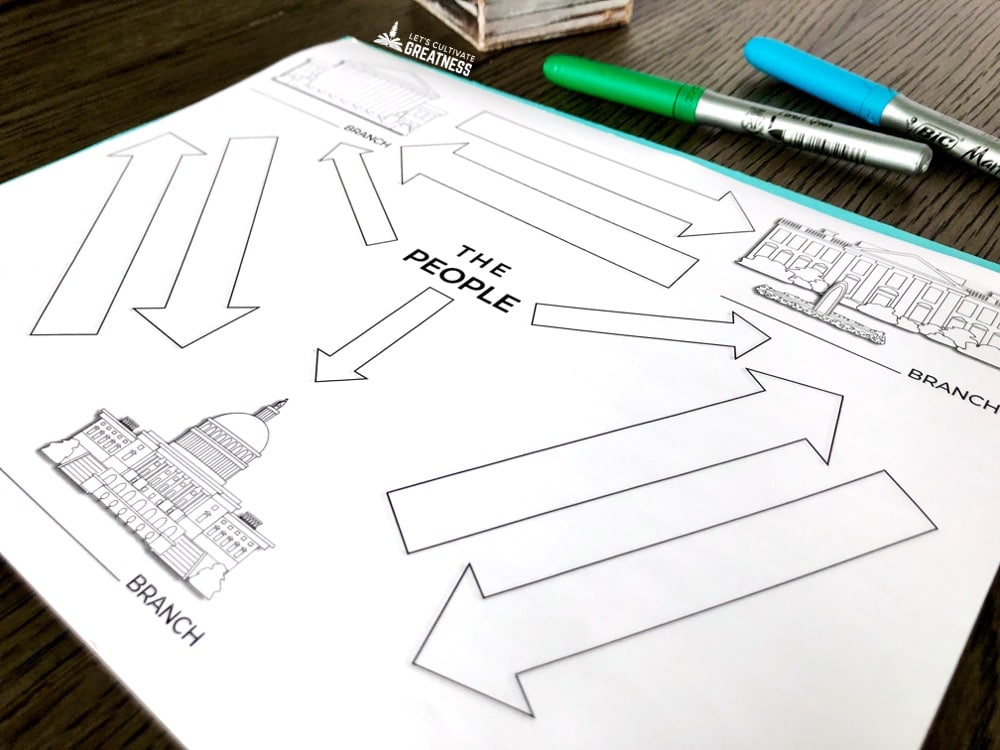
Yes, there are really 4 branches, so throw out that triangle checks and balances diagram you’ve been using for the past few years (or decades!).
We already know students find filling it in boring and rote year after year, which is tell-tale feedback that something’s missing, but we still do it without much reflection, because “it has to be taught.” What’s missing, though, is the relevancy.
The fix, fortunately, is super easy. Rework your diagram to include the fourth branch. Didn’t realize there was a fourth branch? Don’t worry—neither did I for the first several years I taught Civics.
You know what it is? Them! You! The “We the People!” Literally, your students. Your students are what’s missing, which is exactly why it doesn’t have meaning to them.
Smack in the middle of that diagram place a box labeled “The People,” with arrows spoking out to the three branches and have students share ways that they check and hold each branch of the government accountable.
Then, as you focus on each one, weave in talking about those actions. Add to the diagram item by item throughout the unit as you talk about each branch.
And remember, the “People branch” is responsible for so much more than voting once or twice a year. The people call their elected officials about bills and judicial appointments, they write letters to newspaper editors, they attend town halls, protests, and hearings, they approve (or disapprove) of the President and Congress weekly in Gallup polls. There are so many ways Americans can and should check their government, so be sure to have them all listed!
2. Compare Congress with America
Congress was intended to be and still is the branch closest to the people, yet we so often talk about formal representation and not the other kind: sociological representation. The latter is fancy speak for the “do they look like me?” type of representation that’s important to acknowledge.
While Congress is getting more diverse with each new cohort, and some demographic percentages match pretty well with the American population, others do not. This isn’t to say that it’s impossible for a Congressperson to serve the people of one’s district or state well without necessarily looking like their constituents, but rather to wonder what the implications are when certain groups are under-represented, or not represented at all.
Have students look up the percentages of race, religion, gender, and other traits of both the current Congress (search “Membership Profile” on Congressional Research Service’s website for the current Congress) and of larger America (search “United States Profile” on the US Census Bureau’s website).
Your students will absolutely have opinions on these numbers and all the chewy questions it raises, like “What traits are worrisome because they are off? Which ones are no big deal?” and “What should a member of Congress do to best represent people who have different lived experiences than them?” and “What might be some implications if there were no <insert demographic trait> in Congress?”
3. Visualize the (Real) Legislative Process
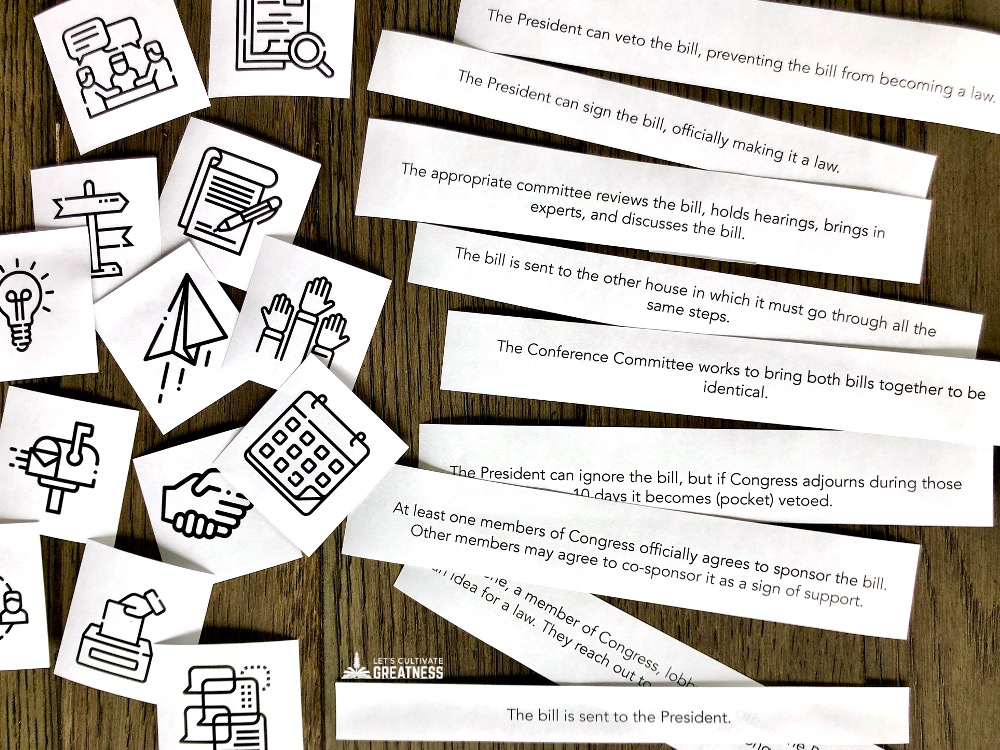
An easy way to level up your lesson on the how-a-bill-becomes-a-law legislative process is to have students look at how the process works in real life.
You probably show the School House Rock song (who doesn’t?) and have students sort a scrambled set of all the steps in proper order, but neither truthfully conveys how the process actually works in real life.
After listening to the low-down from the Civics 101 episode “How A Bill (Really) Becomes a Law,” have students pick an emoji or an icon that best represents how that stage actually functions in real life (I highly recommend Flaticon.com to download thousands of great icon images for free). This creates great discussion and decision making, and students feel they are learning the truth, not the textbook-perfect (read: boring) answer.
4. Explore the President’s Approval Rating
This single number holds considerable power over the President and it’s one held by the people. Yet, it’s not a staple in many Civics classrooms. Let’s change that! The Gallup approval rating poll has come out weekly since 1945 and is a statistic with many options for how to think about it: compare the current president’s rating with past presidents’, connect the current or past percentage to events occurring at the time, or speculate about the effects a certain number had or is having on the president’s influence.
Gallup’s Presidential Job Approval Center interactive tool is great for students to explore with some guiding questions.
If you have time to incorporate the Civics 101’s episode on the Presidential Approval Rating, definitely do! It’s a fascinating listen and really gets students thinking about the influence they have over the most powerful person in the country.
5. Follow the Supreme Court’s Docket
Thankfully, the Supreme Court session follows the school year (October to June) so there is always a current docket of cases waiting to be decided. In summer, when the upcoming session’s cases are announced, news outlets release highlights of the top cases to watch out for, which is exactly where I go to find the two or three I know my students will be interested in.
Once you have your cases selected, have students research and discuss what rights or powers are involved, how the balance of individual rights and common good are at play, why the Court chose to hear those cases, and what central questions are being asked before the Court.
Of surprise to no one, your students will love weighing in on what they think is and isn’t a violation of their Constitutional rights and declaring what they think the Supreme Court should decide.
It’s easy to keep tabs on when cases are heard and decisions are announced using the Supreme Court’s Case Documents website, so I share the results as they come out over the course of the rest of the year. Kids love hearing if the Court ended up “agreeing” with them or not!
I hope these activity ideas help you bring relevance and greater student engagement by inviting students into seeing themselves as the 4th branch of government. If you want a ready-to-go, everything’s-done kit that incorporates all these lessons and a bunch more, check out my Three Branches PBL unit!
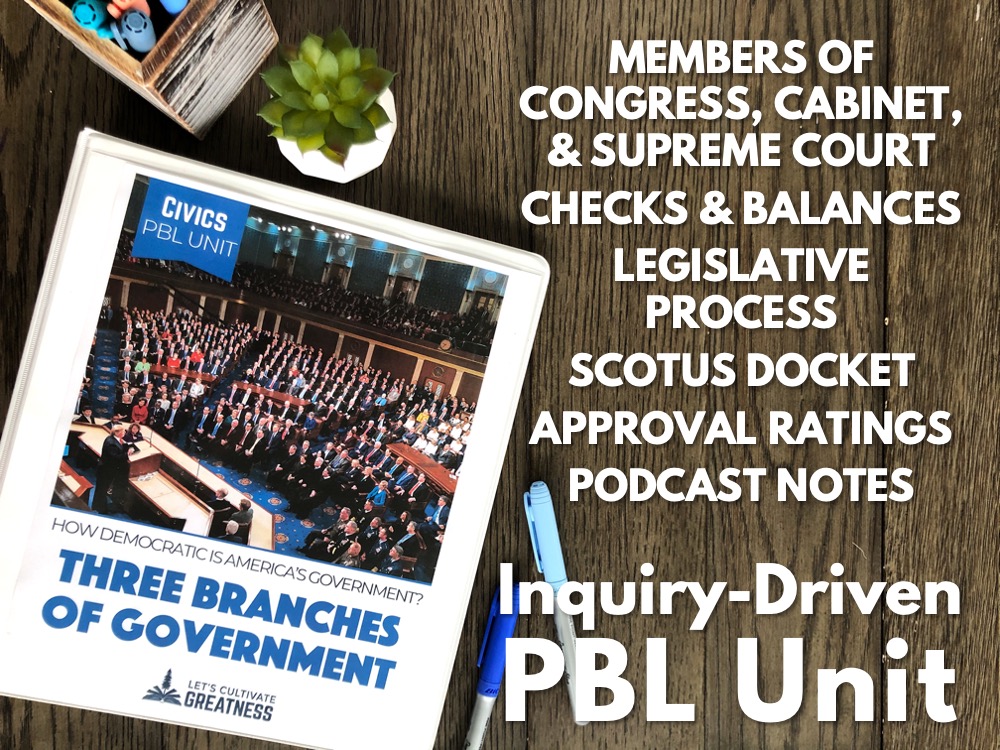
Feature image photo credits: Claire Anderson, Rene Deanda, and Caleb Fisher

